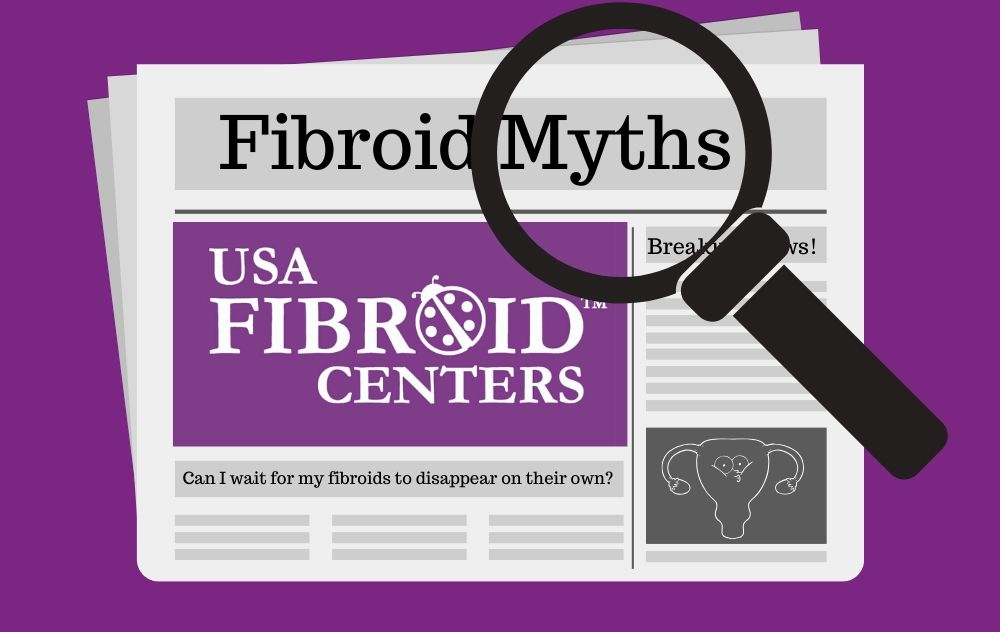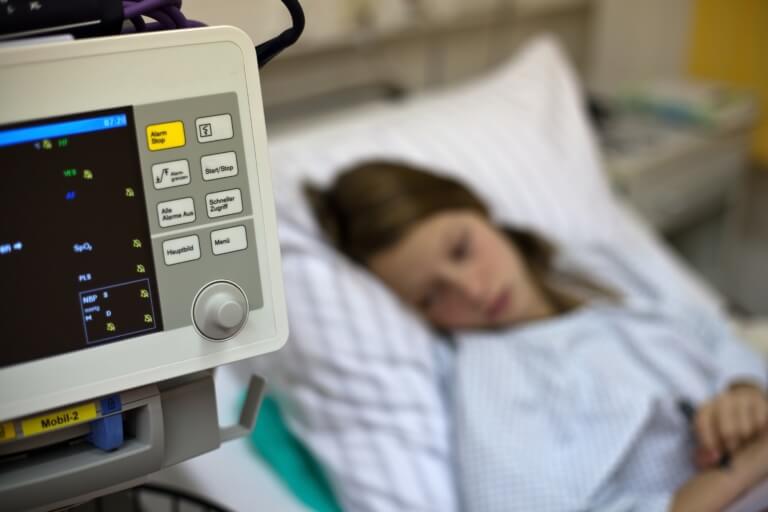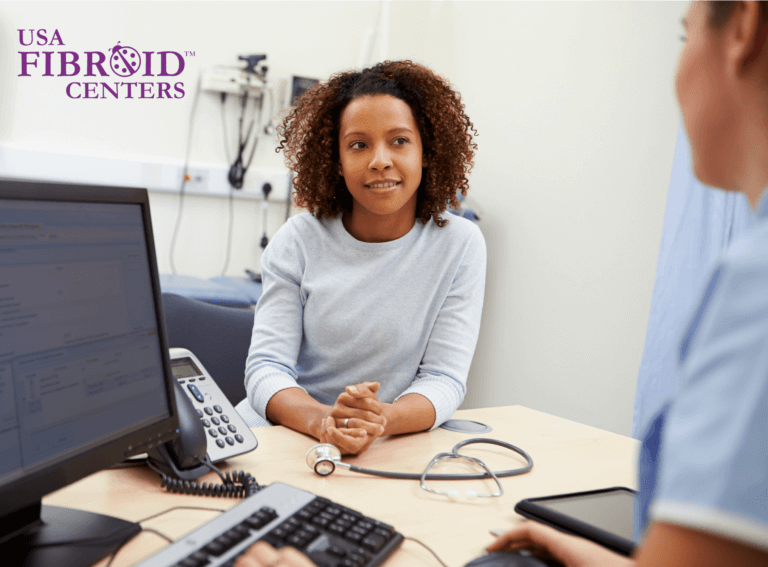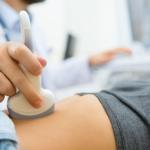
Are you stressed because of a recent fibroid diagnosis? When patients first discover they have uterine fibroids, they often think about a difficult life ahead. In part, this is due to the many myths and misconceptions about fibroid complications surrounding these common, benign uterine tumors. While it is true that uterine fibroid symptoms can be painful and challenging, there’s no need to sacrifice your quality of life when there are several effective fibroid treatments available.
At USA Fibroid Centers, educating the community on fibroids and fibroid treatment is our main goal. Here, we’d like to fill you in on all the basics of uterine fibroids. Then, let’s examine some of the most common myths about fibroid complications. Plus, we have fibroid FAQs our doctors and staff hear from first-time patients at our clinics.
Common Fibroid Complications Myths and Misconceptions
Myth #1: I’m going to need surgery!

This is not true. Unfortunately, people with fibroids often think they only have two options. Hysterectomy, the complete surgical removal of the uterus, or myomectomy, a surgical procedure to remove fibroids. At USA Fibroid Centers, our experts offer a non-surgical alternative for fibroid complications –– an FDA-approved treatment called Uterine Fibroid Embolization (UFE). This nonsurgical outpatient procedure offers a short recovery period of one to two weeks, and is lower risk and less invasive than hysterectomy.
UFE is performed by specialized interventional radiologists in state-of-the-art facilities. Treatment takes between 30 and 45 minutes, during which your doctor will give you light sedation to help you feel comfortable.
More about Uterine Fibroid Embolization:
- Fibroid mapping, an advanced ultrasound method, is for locating your fibroids.
- After numbing the area, your doctor will make a small incision in your upper thigh.
- Embolic material goes through a tiny catheter into the uterine artery to block blood flow to the fibroids.
- Once cut off from blood flow and nutrients, the fibroid(s) will shrink and eventually die.
- The injected material remains permanently in the blood vessels at the fibroid site, making it rare that the fibroid will regrow in the future.
- After treatment, all you’ll need is a small bandage.
- Stitches are not necessary.
If you’ve been told that fibroid surgery is your only option, please visit a fibroid specialist to learn about non-surgical treatments. UFE can shrink your fibroids, eliminate fibroid complications, and control additional uterine fibroid symptoms.
Myth #2: Do I have cancer?

When you hear the words “fibroid tumors,” don’t panic. If you have fibroids, it doesn’t mean you have cancer. Fibroids are one of the most common forms of non-cancerous tumors They affect millions of women during their reproductive years. Statistics demonstrate that less than 1 in 1000 cases of uterine fibroids become malignant. Simply having fibroids doesn’t increase the odds of developing cancer in reproductive organs.
Myth #3: Fibroids and Pregnancy Complications: I won’t be able to get pregnant!
If you’re hoping to conceive in the future, this can be scary to think about. For some, fertility can be impacted by the fibroids themselves. A common question we see is, can fibroids cause pregnancy complications? Changes in the shape of the cervix can affect the number of sperm that can enter the uterus, and changes in the shape of the uterus can interfere with the movement of the sperm or embryo. However, if fibroids get treatment, fertility may restore.
Speaking of fibroid complications, certain treatments can also affect your fertility. Having a hysterectomy will make future pregnancies impossible, so keep this in mind while making your fibroid treatment decision. The good news is that you can successfully get pregnant after Uterine Fibroid Embolization.
Myth #4: I don’t want kids, do I still need my uterus?
Hysterectomy is the only treatment method that guarantees fibroids will never return, so some may be tempted to have one for this reason. You may think that because your family is complete, or because you’re postmenopausal, your uterus is no longer important.
Invasive surgeries that remove the uterus can potentially cause all sorts of health complications. There are many potential risks involved such as: Blood clots, infection, an adverse reaction to anesthesia, damage to your urinary tract, bladder, rectum or other pelvic structures during surgery, and early onset of menopause. It’s wise to think carefully about whether surgical intervention is the right decision for your body.
Myth #5: I’m too young (or too old!) to have fibroids!

Many believe that fibroid complications develop when you’re in your 30s, but that’s not always the case. They’ve shown up in patients as young as 20 and as old as 60 –– with up to 80 percent impacted by age 50. Fibroids often develop when there is a change in estrogen levels and can show up at any age. It’s crucial to get checked regularly –– even if you’re not experiencing fibroid complications like fibroid pain or heavy menstrual bleeding.
Myth #6 I have fibroid symptoms, does this mean I have fibroids?

It’s excellent to be in tune with your body and aware of the indicators; however, just because you are experiencing symptoms does not mean you automatically have fibroids. If you have noticed potential fibroid complications and symptoms, be sure to visit your doctor for a proper medical diagnosis. Many of these symptoms can be indicative of other medical conditions –– some of which may be more serious than fibroids.
Myth #7: I’ve heard fibroid surgeries work better than fibroid treatment without surgery.
Not true! According to Dr. James Spies MD MPH, Professor, Chairman and Chief of Service of the Department of Radiology at Georgetown University School of Medicine, the success rate for UFE is considerable. Although it depends on the individual situation, between 85 and 90 percent of patients who undergo fibroid treatment without surgery with UFE will have substantially improved menstruation about three months post-procedure.
When it comes to other symptoms, they usually improve even faster. Fibroid complications such as pressure, pain, discomfort, bloating, urinary frequency often improve or completely diminish within several weeks. About 90 percent of women overall by three to six months post treatment will have their symptoms improved significantly — meaning moderately improved to completely resolved.
Myth #8: Can I wait for my fibroids to disappear on their own?
We want you to be aware that while most fibroids are not dangerous, they do have the potential to harm surrounding organs and impact fertility. Also, if you are suffering from fibroid complications like prolonged menstrual periods, severe cramps, frequent urination, or fibroid pain, we recommend seeking treatment. If the symptoms of fibroids don’t get treatment, they can lead to more serious complications.
If you would like to wait and see if your fibroids shrink and symptoms improve without medical intervention, we recommend discussing this option with a fibroid specialist. While there is some evidence that suggests fibroids decrease in size when hormone levels go down –– such as after menopause or pregnancy –– there is no guarantee that this will happen.
Myth #9: I don’t have any symptoms, so I don’t have fibroids!
Some lucky individuals do not experience fibroid symptoms. However, asymptomatic fibroids are difficult to detect and often go undiagnosed for years, which can lead to fibroid complications. We recommend annual visits to your doctor for screening, since doctors usually detect fibroids during routine pelvic exams.
If you may have fibroids, a specialist will use ultrasound technology to determine the location, size, type, and number of fibroids. If you’re not experiencing symptoms, your provider can help determine whether treatment is necessary to prevent additional health issues or fibroid complications.
Get All Your Fibroid FAQs Answered

Fibroid complications can be debilitating –– affecting career, social life, relationships, overall health, sex life, and daily quality of life. If you have been diagnosed with fibroids, or are in need of a diagnosis, it’s important to choose a team of health specialists and interventional radiologists that care about your health and quality of life.
Schedule an appointment today with one of our top experts at USA Fibroid Centers to learn more about Uterine Fibroid Embolization and other non-surgical treatments. We are available to answer all of your fibroid FAQs about fibroid symptoms, treatment, and recovery.



